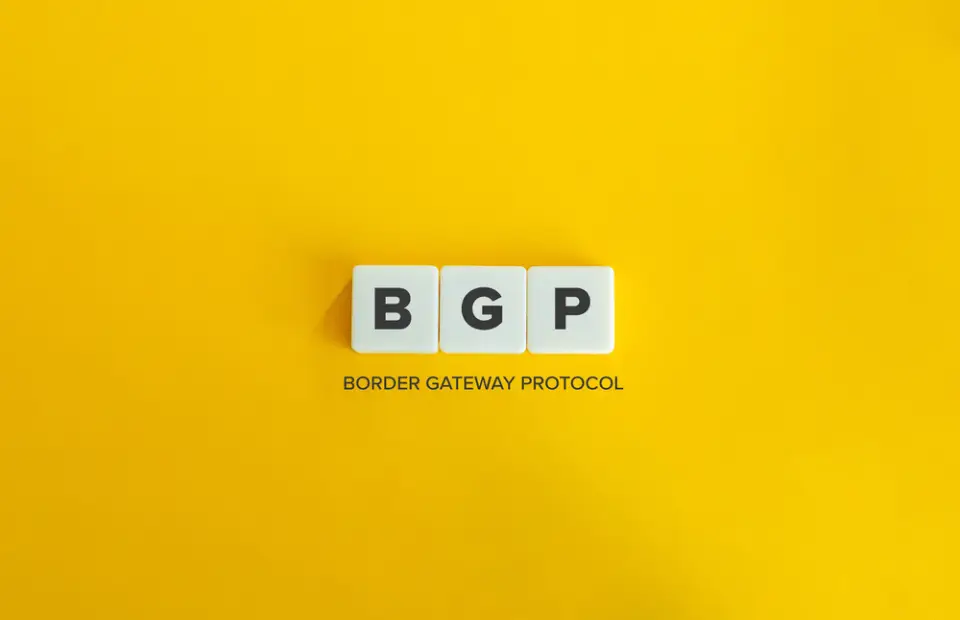The Border Gateway Protocol is used for Communication between Autonomous Systems on the Internet. It allows the transformation of the information by routing it over multiple networks. As technology is growing very fast like 5G technology, It helps in directing the data flow across the Internet.
The Border Gateway Protocol (BGP) is fundamental in the Internet ecosystem, responsible for facilitating communication between Autonomous Systems (ASes). This article will delve into the workings, significance, and evolution of BGP, providing a comprehensive understanding of its role in maintaining the global connectivity of the internet. In addition to the previous article, this extended version will explore BGP’s work in greater detail and discuss other relevant aspects of the protocol.
1. Background and Significance of BGP
Developed in the late 1980s, BGP emerged as the successor to the Exterior Gateway Protocol (EGP). Its primary purpose was to replace EGP’s limited functionality with a more advanced and efficient routing protocol, capable of handling the growing complexity of the internet. Today, BGP is the de facto protocol for inter-AS communication, ensuring the seamless exchange of data packets across the globe.
2. BGP Operation and Functionality

BGP operates on Transmission Control Protocol (TCP) port 179, utilizing path vectors to determine the optimal route between ASes. It is responsible for maintaining the global routing table, which contains the paths that data packets take to reach their destinations across the internet.
Some key aspects of BGP’s functionality include:
Routing Information Exchange
BGP exchanges routing information between ASes, allowing them to share knowledge of reachable networks and their associated paths. This information exchange enables ASes to make informed decisions about the optimal routes for data transmission.
Path Selection
BGP employs a complex decision process to select the best path for data transmission. This process considers factors such as AS path length, local preference, origin code, and multi-exit discriminators (MEDs). By evaluating these criteria, BGP ensures that data packets take the most efficient route between ASes.
Route Aggregation
BGP allows for route aggregation, which involves summarizing multiple IP address ranges into a single route. This process reduces the size of the global routing table and minimizes the load on routers, making the routing process more efficient.
3. BGP Message Types
BGP communicates using several message types, each serving a specific purpose in the routing process. Some of the key BGP messages include:
OPEN
This message is exchanged at the beginning of a BGP session, containing information about the sender’s AS number, capabilities, and hold time.
UPDATE
The UPDATE message is used to convey reachability information between ASes. It contains a list of IP prefixes and their associated paths.
KEEPALIVE
Periodically sent to maintain the BGP session, KEEPALIVE messages ensure that the connection between ASes remains active.
NOTIFICATION
BGP uses NOTIFICATION messages to signal errors or unexpected events, such as an invalid route or a violation of BGP policies.
4. BGP Path Vector Routing
BGP operates as a path vector routing protocol, meaning it shares the complete sequence of ASes a packet must traverse to reach its destination. This information helps prevent routing loops and ensures that data packets take the most optimal path between ASes.
5. BGP Peering and Sessions
BGP establishes peer connections between routers in different ASes, allowing them to exchange routing information. These peer connections can be established using either an Internal Border Gateway Protocol (iBGP) or an External Border Gateway Protocol (eBGP). iBGP connections are established within the same AS, while eBGP connections are formed between different ASes.
6. BGP Route Selection Process

The BGP route selection process involves several steps, as outlined in the BGP decision process. This process considers various factors, such as:
Local Preference
This metric determines the preference for a route within the local AS. Routes with a higher local preference are preferred over those with a lower value.
AS Path Length
The number of ASes a route passes through is considered in the decision process. Shorter paths are generally preferred over longer ones.
Origin Code
Routes originating from an AS (IGP), a neighboring AS (EGP), or an Internet Service Provider (i) are given different weights in the decision process.
Multi-Exit Discriminator (MED)
This metric is used to influence the choice of exit points within an AS. Routes with lower MED values are preferred, as they indicate shorter paths within the AS.
7. BGP Evolution and Future Trends

Over the years, BGP has undergone several enhancements and updates to accommodate the evolving nature of the internet. Some notable developments include:
BGP Communities
Introduced in the late 1990s, BGP Communities are tags that can be attached to routes, allowing network administrators to control routing policies and influence path selection.
BGP Route Reflectors
Route Reflectors were developed to address the scalability issues associated with full mesh peering in large ASes. They enable a single Route Reflector to relay BGP updates to multiple routers, reducing the number of peering connections required.
BGP Security Enhancements
As cybersecurity threats have evolved, efforts have been made to enhance the security of BGP. Techniques like Resource Public Key Infrastructure (RPKI) and BGP Origin Validation aim to prevent routing hijacks and ensure the integrity of routing information exchanged between ASes.
Segment Routing (SR)
SR is a relatively new routing technique that allows for more precise control over packet forwarding. It combines the advantages of both link-state and source-based routing protocols, providing flexibility and scalability in routing decisions.
Conclusion
The Border Gateway Protocol (BGP) plays a pivotal role in facilitating communication between Autonomous Systems, ensuring the seamless exchange of data across the internet. By understanding its working, message types, path vector routing, peering, route selection process, and evolution, we can appreciate the significance of BGP in maintaining the global connectivity of the internet. As the internet continues to grow and evolve, it is essential to comprehend the intricacies of BGP to ensure the efficient and secure functioning of inter-AS communication.
Frequently Asked Questions about Border Gateway Protocol (BGP)
What is Border Gateway Protocol (BGP) and its significance in internet communication?
Border Gateway Protocol (BGP) is a standardized exterior routing protocol used on the internet for communication between Autonomous Systems (ASes). It plays a crucial role in the efficient routing and exchange of data between different networks, ensuring optimal path selection and maintaining the stability of the global internet infrastructure.
How does BGP differ from other routing protocols, and why is it specifically used for inter-AS communication?
BGP differs from IGPs as it's designed for AS-to-AS communication, handling large-scale routing and policy-based decisions.
What are the key components and features of BGP that make it suitable for internet communication?
Key BGP features include path vector algorithm, policy-based routing, and large routing table handling, making it suitable for internet communication.





